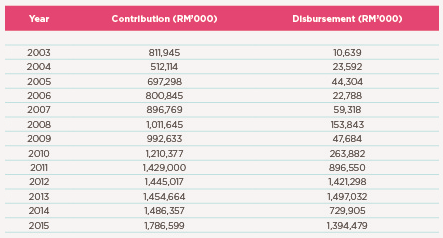In rush towards world class digital infrastructure, digital gap must be addressed: Page 2 of 3
By Karamjit Singh February 2, 2017
Eye on inclusivity to ensure no segment left too far behind
At the same time, while conversations around broadband tend to revolve around speeds and cost, Ali Hanafiah says Malaysia has always had its eye on inclusivity to ensure no segments of the population are left too far behind. For in this digital age, the digital divide is not just a social/political issue but an economic one that hits the potential earning power of citizens.

To ensure that the access gap and usage gap is closed, MCMC, as other regulators around the world uses monies contributed from the profits of operators at a 6% rate, to invest in infrastructure, devices, access and provide training to Malaysians who sit outside of the economically viable areas, with operators not willing to serve them.
Called the Universal Service Provision Fund, the accompanying table above shows how much has been invested from the fund towards these various efforts to close the digital gap.
The accompanying infrographic above provides a snap shot view of the efforts taken so far with more to come, Ali Hanafiah promises. But closing this gap cannot just be seen as a government responsibility, with the GSMA in its Mobile Connectivity Report also stressing the role the private sector needs to play together with the public sector to address network performance, affordability, awareness, digital skills and locally relevant content and services. The GSMA also calls for innovative solutions to bring coverage to areas where it is economically unviable.
One recent example of private sector contribution is where Digi Telecommunications together with Petrosains are introducing a robotic programme to provide secondary school students basic designing, coding and sensor training in robotic development. This programme will be opened to students from schools surrounding the Pusat Internet 1Malaysia (PI1M) which are managed by Digi, across the nation.

Next page: Truly bridging the digital gap



